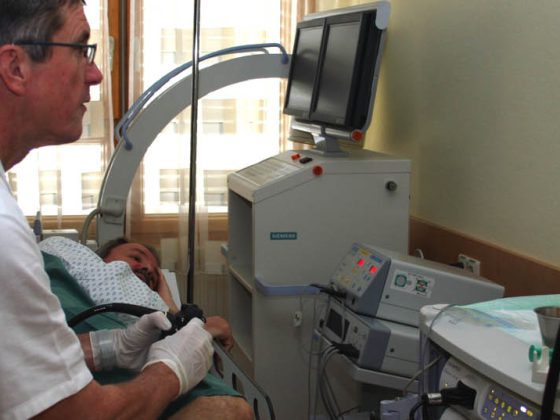A study co-led by the Swiss Association for Clinical Cancer Research (SAKK) and published in the journal BMC Cancer concludes that place of residence, insurance, age, and type of cancer all play a role in determining what treatment cancer patients receive at the end of life.
(ag) The retrospective study on the care situation at the end of life was conducted by SAKK for the first time in Switzerland. Between 2006 and 2008, data from 3809 patients who died during this period were included in the analysis. Data from the health insurer Helsana were compared with those from four Swiss registries from the cantons of Basel-Stadt, Ticino, Valais and Zurich. Hospital admissions and types of treatment (especially chemotherapy and radiotherapy) were examined for regional differences such as canton, city, country, as well as patient-related differences such as age, gender, type of insurance, and type of cancer.
The following results are relevant: In the last month of their lives, cancer patients in Switzerland receive very different care: they do not receive chemotherapy with the same frequency in every canton, and the circumstance of whether they tend to spend the end of life at home or admitted to a hospital is also not regionally uniform. In addition to regional differences, treatment is also influenced by whether or not patients have supplementary insurance. The patient’s age and type of cancer also play an important role.
What do the results look like in detail?
68.5% of patients were hospitalized in the last month of life. Chemotherapy was given to 14.5, and radiotherapy to 7.7%.
Care was most strongly influenced by place of residence and type of insurance: in Ticino, patients (compared with Zurich) had more than one and a half times the chance of still receiving chemotherapy. Patients in Valais were hospitalized the least. Those with semi-private or private supplemental insurance were about twice as likely to receive chemotherapy as patients who lacked it. They were also the most frequently hospitalized group.
As age increased, the number of chemotherapy and radiotherapy treatments decreased, as did the hospitalization rate. In this regard, the highest rates were achieved by patients with lung cancer. Overall, the hospitalization rate was very high by international standards.
Focus on the Swiss healthcare system
The overall hospitalization rate could be interpreted as an indication of high hospital density and relatively few alternatives to acute hospital care. Switzerland’s federal system tends to make it rather difficult to conduct such analyses, especially since no national databases are available. It nevertheless seems possible to conduct studies of the health care system in this country, as shown by this study, which obtained its data from a variety of sources. It cannot answer the question of whether regional differences indicate overuse or underuse, whether treatments were medically appropriate, and whether there is a desire for more therapies on the part of the physician or the patient. Further research is needed on this.
Source: Media release dated May 7, 2014
InFo Oncology & Hematology 2014; 2(5): 2










